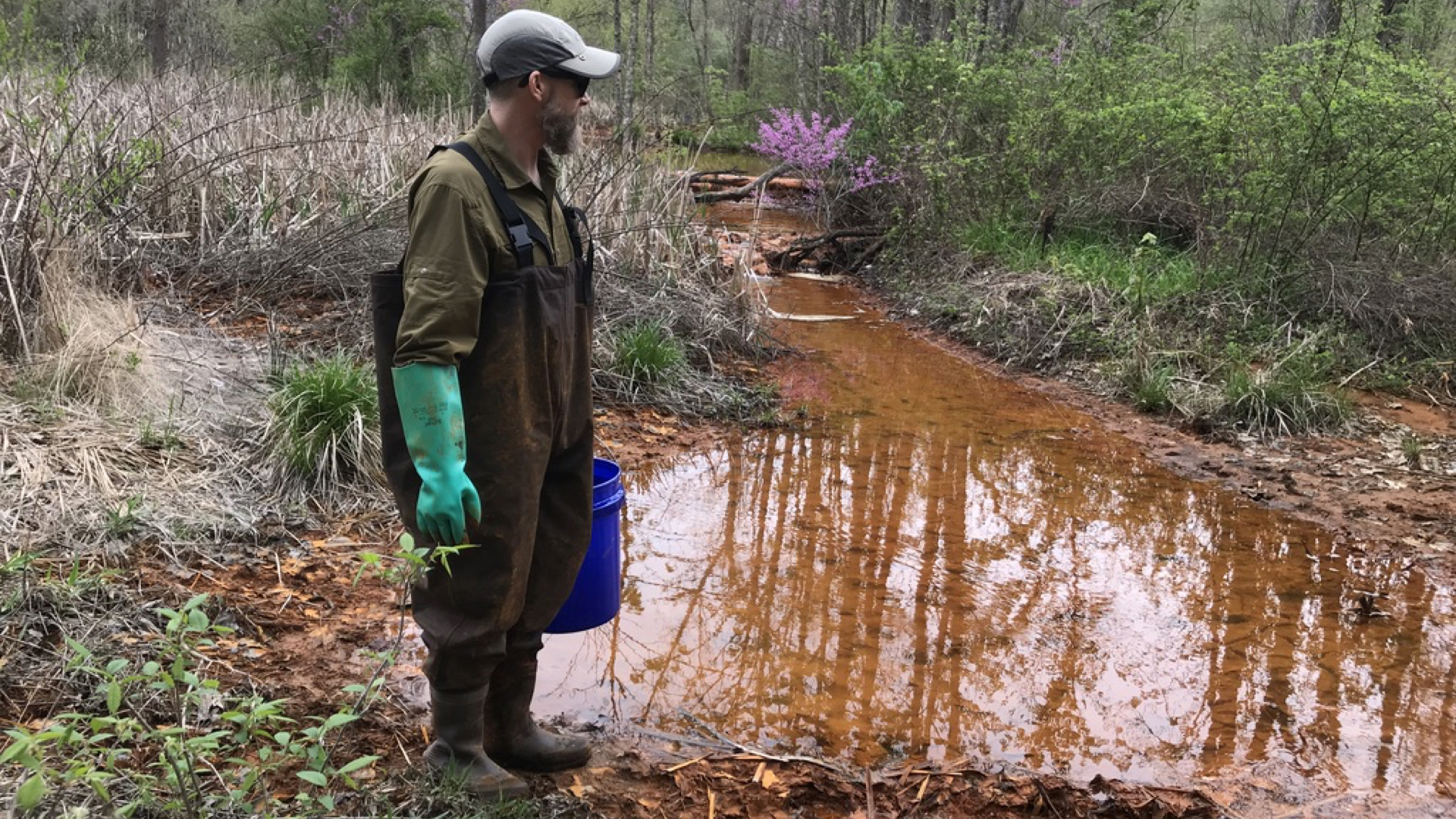
Dr. Guy Riefler, an engineering professor at Ohio University (Athens), has devoted his research efforts to solving the extensive acid mine drainage problem in Southeast Ohio.
“As an environmental engineer, my focus is problem-solving using environmental solutions. For example,” Riefler says, “cleaning up pollution.”
Rural Appalachia was once a prolific region for coal mining. Before the 1970s, the U.S. didn’t have many environmental regulations. Ultimately, many mines were neglected after coal deposits ran out.
“Picture a coal miner, hunched over and pulling out coal from the earth. They would tunnel into it and remove as much coal as they could, but they left some behind,” Riefler says. “So, you end up with these labyrinths– tunnels carved out of the earth.”
Over time, the mines filled with water from deactivated pumps, exposing pyrite minerals to water and oxygen, and formed sulfuric acid and dissolved iron. Though it isn’t a threat to humans, the iron is destructive to wildlife.
“Fish are very susceptible to low pH and sulfuric acid lowers the pH, which kills fish,” Riefler says.

In the 1980s, a previously sealed air shaft exploded, which is responsible for emptying approximately 4,000 pounds of iron into Sunday Creek every day. The Sunday Creek Watershed, as a tributary of the Hocking River, encompasses parts of Perry, Athens and Morgan counties.

Eight years ago, Riefler decided to start an initiative to remove iron oxide, pictured above, from Sunday Creek.
However, the cost of the process exceeded any funding Riefler received from the university. It was this realization that sparked Riefler’s idea of using the stream’s iron to create and sell paint to support the project.
Riefler also realized he needed an artist’s input. He contacted John Sabraw, a resident artist and professor at OHIO, to help develop pigments for a commercial market.
Sabraw is an environmentally-focused artist. He discovered polluted streams through a sustainability immersion project which encouraged him to create art out of the rust-colored toxic sludge.
“What we’re trying to do is to perfect our process whereby we will intercept the acid mine drain pollution before it reaches the streams and before it precipitates out the iron metal pollution,” Sabraw says.
Revenue from the Toxic Art Project will support a self-sustaining environmental restoration project to rejuvenate the Hocking River tributary. The project’s ultimate goal is for the pilot-funded treatment plant to filter enough water for the creek to be safe and clean enough for aquatic life.
“We are in the process of designing a full-scale treatment plan for Sunday Creek. When that comes online, we’ll be making 4,000 pounds of pigment a day,” Riefler says.
For Sabraw, artists and scientists collaborating on projects delve into new territories as they address sustainability issues.
“In the case of these pigments, I create paintings made in acrylic and oil paint that try to create a conversation between the ecosystem and the sublimity of nature,” Sabraw says.